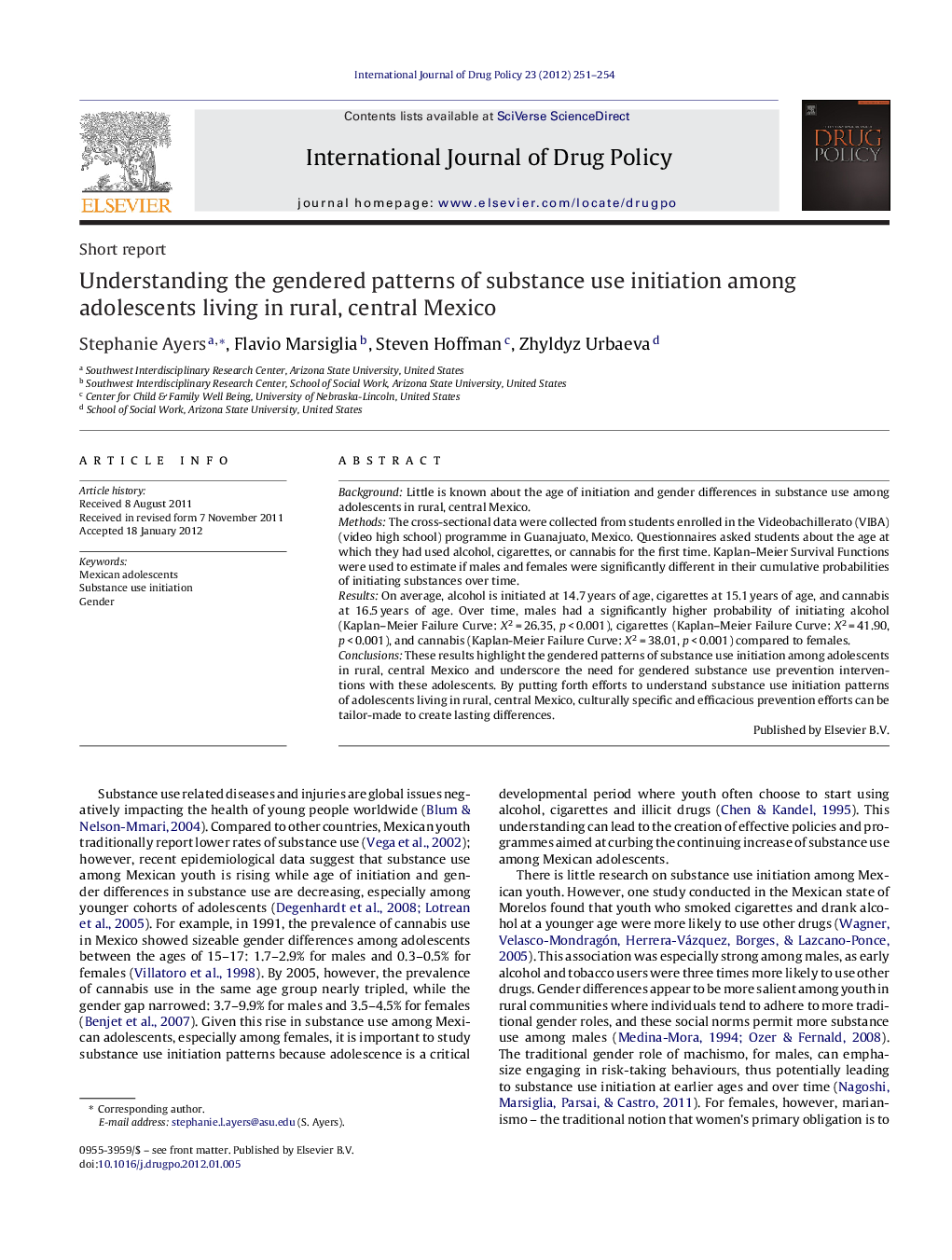| Article ID | Journal | Published Year | Pages | File Type |
|---|---|---|---|---|
| 1075208 | International Journal of Drug Policy | 2012 | 4 Pages |
BackgroundLittle is known about the age of initiation and gender differences in substance use among adolescents in rural, central Mexico.MethodsThe cross-sectional data were collected from students enrolled in the Videobachillerato (VIBA) (video high school) programme in Guanajuato, Mexico. Questionnaires asked students about the age at which they had used alcohol, cigarettes, or cannabis for the first time. Kaplan–Meier Survival Functions were used to estimate if males and females were significantly different in their cumulative probabilities of initiating substances over time.ResultsOn average, alcohol is initiated at 14.7 years of age, cigarettes at 15.1 years of age, and cannabis at 16.5 years of age. Over time, males had a significantly higher probability of initiating alcohol (Kaplan–Meier Failure Curve: X2 = 26.35, p < 0.001), cigarettes (Kaplan–Meier Failure Curve: X2 = 41.90, p < 0.001), and cannabis (Kaplan-Meier Failure Curve: X2 = 38.01, p < 0.001) compared to females.ConclusionsThese results highlight the gendered patterns of substance use initiation among adolescents in rural, central Mexico and underscore the need for gendered substance use prevention interventions with these adolescents. By putting forth efforts to understand substance use initiation patterns of adolescents living in rural, central Mexico, culturally specific and efficacious prevention efforts can be tailor-made to create lasting differences.
